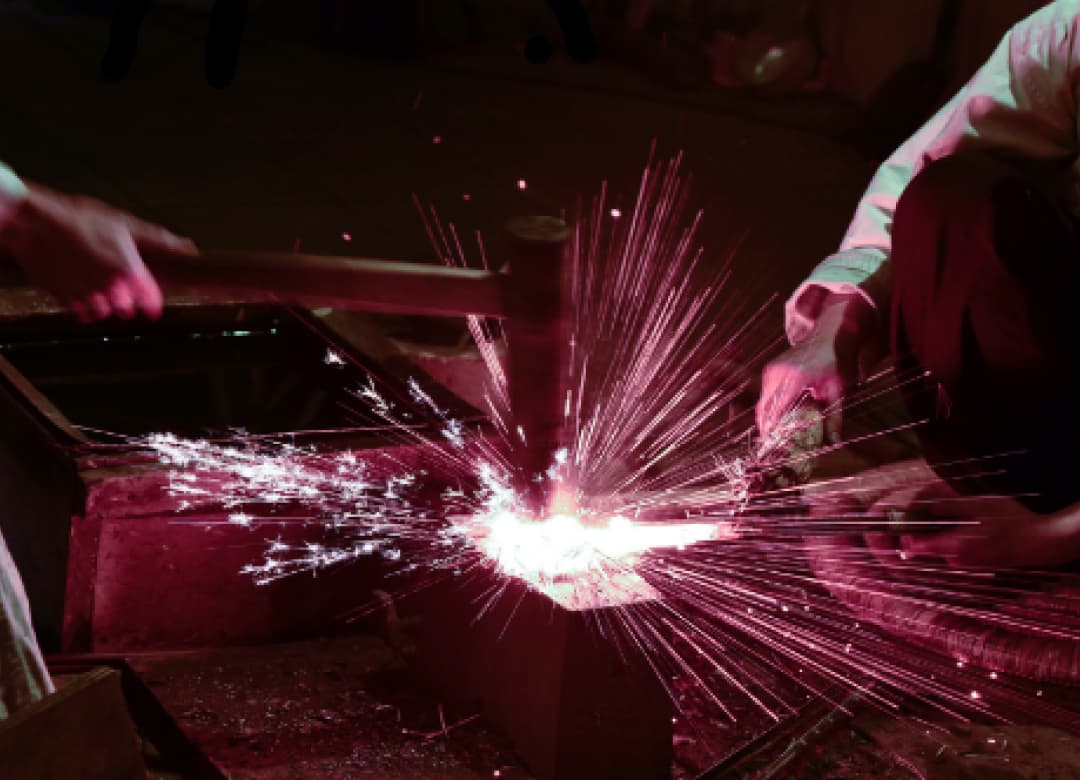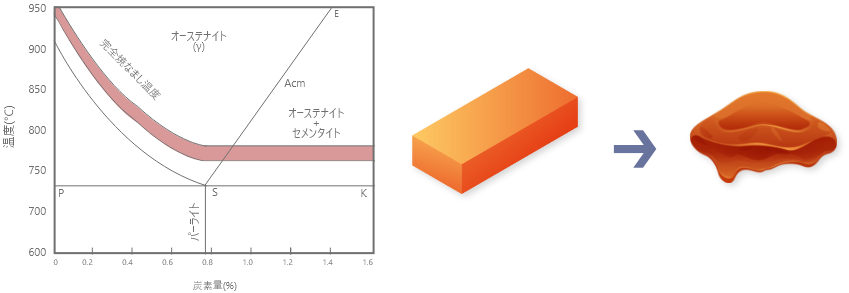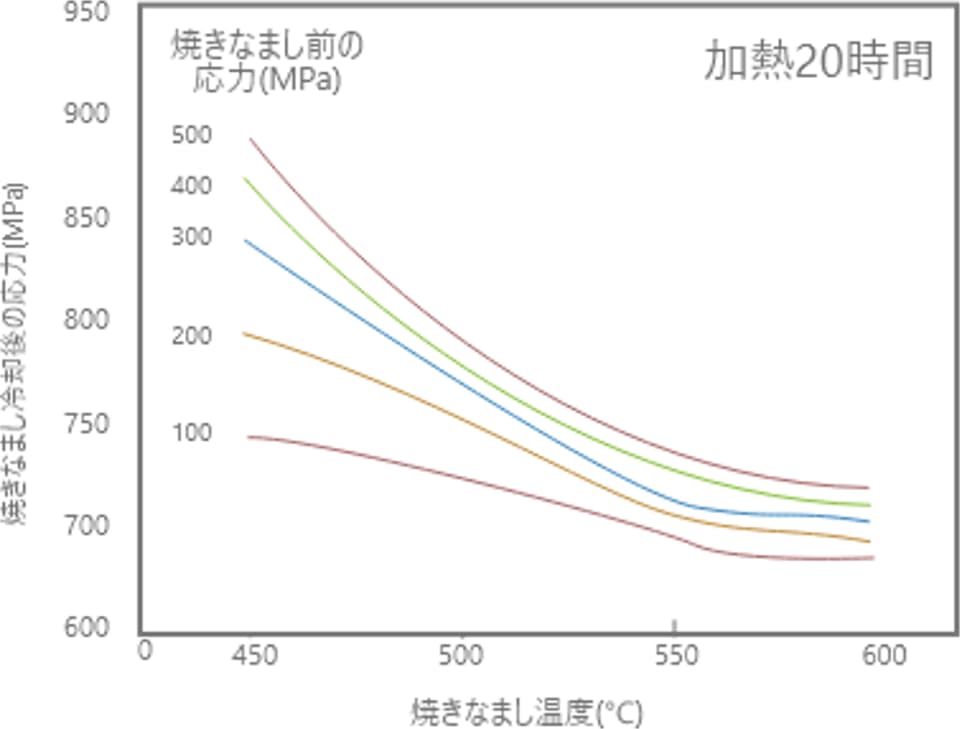Types and Fundamentals of Heat Treatment
Column
Heat Treatment of Steel—Introduction
Heat Treatment of Steel

Heat treatment is an essential and inseparable part of the manufacturing process when using metals. However, the term "heat treatment" encompasses a wide variety of types and methods. How familiar are you with different types of heat treatment? Perhaps terms like "quenching" and "tempering" come to mind? For those more knowledgeable, you might also be familiar with "annealing." But what are the purposes of these processes, and how are they carried out? Are there other treatments worth knowing about?
Less commonly known treatments include solution heat treatment, sub-zero treatment, and carburizing. Even if you don't know the names of these processes, your surroundings are likely filled with products that have undergone such heat treatments.
To illustrate, think of the traditional process of making Japanese swords. Even if you don’t know the exact steps, you might recall images seen on TV or the internet. A craftsman in white clothing hammering red-hot metal—this is the picture many might envision.
But why are these actions taken? Surely there are simpler ways to craft a blade, such as cutting a shape out of a flat steel sheet. Why, then, does the metal need to be heated, hammered, and quenched in water?
Japanese swords are renowned for being flexible, resistant to breaking, and exceptionally sharp. (In fact, merchants from the Tang Dynasty in ancient China are said to have crossed the seas to purchase them during the Heian and Kamakura periods.) These high-performance blades are created through systematic steps based on theory and through heat treatment processes.
Heat treatment is a mature technology that has been used for centuries, and understanding it fully requires extensive knowledge. While exploring the subject in-depth takes time, this article will introduce the fundamentals of "heat treatment of steel," a foundational and critical topic.
What Is Steel?
Steel is a material composed primarily of iron, with additives mixed into iron ore to artificially enhance properties such as toughness and hardness.
When iron ore is melted alone, the resulting material often has an uneven carbon content and includes impurities, making it unstable as a material. By adding substances like coal and limestone, adjusting the carbon content, and removing impurities, a material called pig iron is produced.
There are different types of pig iron, including those used for casting and those used as raw materials for steel production. Pig iron for steelmaking is further classified into bearing steel, tool steel, heat-resistant steel, and more, depending on its carbon content. Carbon significantly affects the properties of steel.
What Is Heat Treatment?
So, what changes occur in steel when it undergoes heat treatment? Heat treatment is defined as a "thermal process used to alter the properties of metals to suit specific purposes."
In other words, heat treatment optimizes the properties of metals through a combination of heating and cooling. By changing the microstructure of metals, their mechanical properties are improved.
The study of metals can be divided into fields such as materials engineering, microstructural science, thermal metallurgy, and casting engineering. These fields overlap in many areas. The microstructure of metals falls under the realm of microstructural science.
This article focuses on the basic heat treatments of steel—annealing, quenching, and tempering—without delving too deeply into technical details.
Basics of Heat Treatment
Heat treatment involves heating metals to specific temperatures and cooling them using appropriate methods to adjust their properties such as hardness, wear resistance, ductility, and toughness. It is an essential process for optimizing the quality and performance of products.
Purpose of Heat Treatment
Heat treatment serves the following purposes:
-
Softening (Annealing):
Softens steel to improve machinability, relieve residual stress, and adjust grain structure. -
Hardening (Quenching):
Increases hardness and enhances wear resistance. -
Stabilizing (Tempering):
Steel immediately after quenching is unstable both structurally and in terms of internal stress. Tempering eliminates this instability.
Types of Heat Treatment
The basic heat treatments for steel are annealing, quenching, and tempering. These can be broadly classified into overall heat treatments and surface heat treatments.
Overall Heat Treatment
This method involves placing the entire object into a furnace and treating it, followed by cooling to uniformly change the properties of the entire material.
Surface Heat Treatment
Like overall heat treatment, heat is applied to the object. However, in surface heat treatment, only specific surface areas are heated and treated. A common method is induction hardening.
Basic Heat Treatments of Steel: Annealing, Quenching, and Tempering
Annealing
Annealing includes stress-relief annealing, full annealing, and spheroidizing annealing. The primary objectives are to relieve residual stress, adjust the grain structure, and soften steel to improve machinability.
Full Annealing:
This widely used process removes internal stress caused by welding or machining, softens the material, and improves machinability.

Stress-Relief Annealing:

This process aims to release accumulated internal stresses to prevent deformation or failure.
Diffusion Annealing (Soaking):
This process evenly distributes elements like phosphorus or sulfur in the material by heating it at high temperatures (around 1000–1300°C) for an extended period.
Quenching
Quenching involves heating steel to a uniform austenitic state and then rapidly cooling it to form martensite, a very hard structure. Cooling methods include air cooling, oil cooling, water cooling, or gas cooling.
Press Quenching:
Used for thin materials or shapes prone to deformation during quenching. The object is held in place using molds or fixtures during the process.
Spray Quenching:
Commonly used for tools like molds and hammers. After quenching the entire object, cooling gas is sprayed on specific areas for hardening.
Tempering
While quenching hardens steel, it also reduces toughness, making it brittle. Tempering optimizes this brittleness by reheating the steel to a specific temperature, stabilizing its structure, and slightly softening it.
Low-Temperature Tempering:
Used for high wear-resistant steels like carbon tool steel, carburizing steel, and alloy tool steel.
High-Temperature Tempering:
Applied to structural steels requiring toughness.
Conclusion
As mentioned earlier, Japanese swords are known for their sharp blades that resist chipping and their flexibility that prevents breaking. These seemingly contradictory features are achieved through clever quenching techniques.
By selectively applying clay to areas where hardness is desired and leaving other areas untreated, craftsmen created temperature differences across the blade during quenching, altering the steel’s properties accordingly. The distinctive patterns on the blade are a byproduct of this process.
Heat treatment is an intricate and fascinating field that has been refined over centuries, offering endless opportunities for exploration.